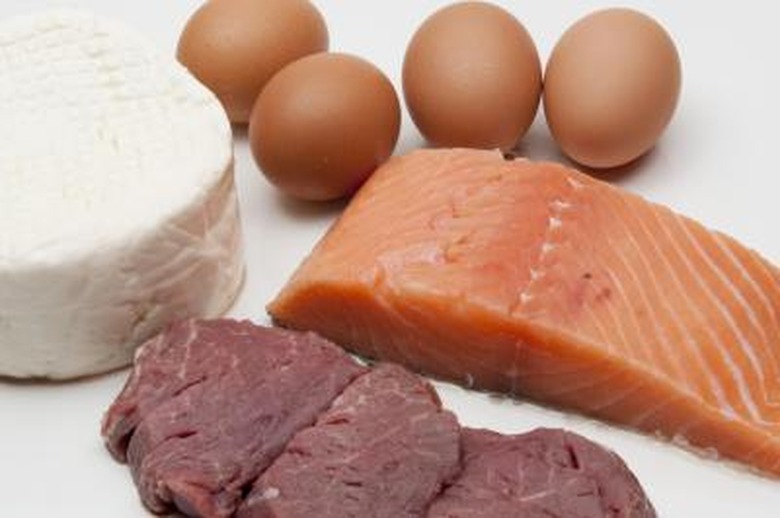5 Types Of Protein
Nutrients are necessary for all living organisms. Proteins are complex molecules that help your body perform a wide variety of biological functions. Each protein type serves a specific function. Proteins are composed of building blocks known as amino acids, which were first isolated in the early 1900s. Your body uses about 22 amino acids, though more exist. Proteins contain varying amounts of these primary amino acids. Protein provides the necessary elements for cell function.
Structural
Structural
The largest class of proteins are structural proteins. These protein types serve as essential components to your body's construction. Keratin and collagen are the most common structural proteins. These are strong, fibrous proteins. Keratin forms the structure of your skin, nails, hair and teeth. While, collagen serves as a connective structure for your tendons, bones, muscles, cartilage and skin in particular.
Storage
Storage
Storage proteins house critical elements that your cells need. Hemoglobin is a vital protein that stores oxygen in your red blood cells. This critical protein is transported to all of your cells and tissues as your blood circulates. Ferritin is a storage protein that houses the crucial element iron, which helps your body make healthy red blood cells. It is composed of complex polypeptide chains and is released when needed.
Hormonal
Hormonal
Hormonal proteins act as chemical messengers. They carry signals through a complex communication process known as your endocrine and exocrine system. This system is composed of hormone producing glands and cells. Your pancreas excretes the hormone insulin, which is released in response to your blood sugar levels, for example. Insulin is transported through your bloodstream to remove sugar when your blood sugar levels are elevated.
Enzyme
Enzyme
Enzymes serve as biological catalysts needed for chemical reactions. Digestive enzymes help your body digest food, for instance. They split complex molecules into simple forms for your body to use. Amylolytic digestive enzymes reduce carbohydrates and starches to glucose and proteolytic enzymes reduce proteins to amino acids.
Immunoglobulins
Immunoglobulins
Your body must protect itself from invaders and other foreign substances. Immunoglobulins serve this purpose. They act as antibodies, release in response to antigen recognition. Each immunoglobulin protects against a different antigen type. Immunoglobulin A provides protection against mucosal antigens. These are bacteria or viruses found in your saliva for example.
Cite This Article
MLA
Renee, Janet. "5 Types Of Protein" sciencing.com, https://www.sciencing.com/5-types-of-protein-8206975/. 5 December 2018.
APA
Renee, Janet. (2018, December 5). 5 Types Of Protein. sciencing.com. Retrieved from https://www.sciencing.com/5-types-of-protein-8206975/
Chicago
Renee, Janet. 5 Types Of Protein last modified March 24, 2022. https://www.sciencing.com/5-types-of-protein-8206975/
